Faberge's imperial designs
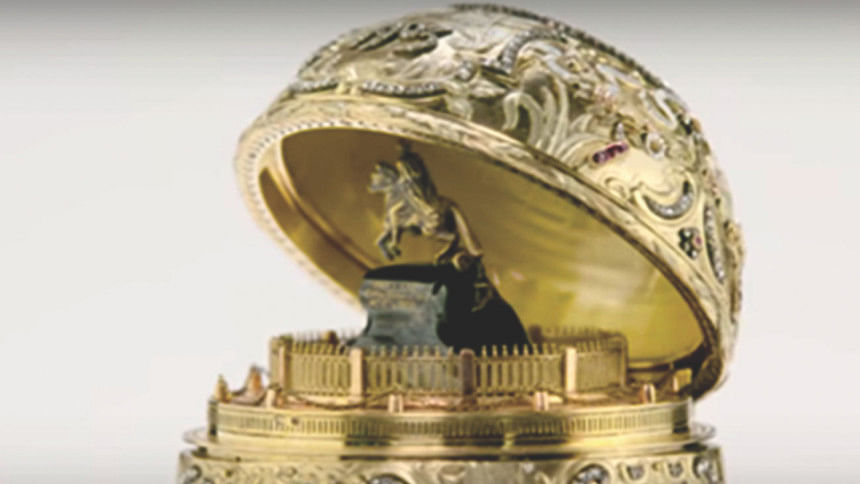
Karl Gustavovich Faberge (1846-1920), was a Russian jeweller, best known for making decorated Easter eggs using precious stones and metals. His legacy is the series of Imperial Easter Eggs made for the Romanov Tsars of Russia, before the Bolshevik Revolution.
The story begins with the the traditional custom of giving decorated eggs at Easter; Tsar Alexander III presented his wife, Empress Maria Feodorovna the first imperial Easter egg in 1885. Crafted from gold, its opaque, white, enameled shell revealed a matte yellow-gold yolk.
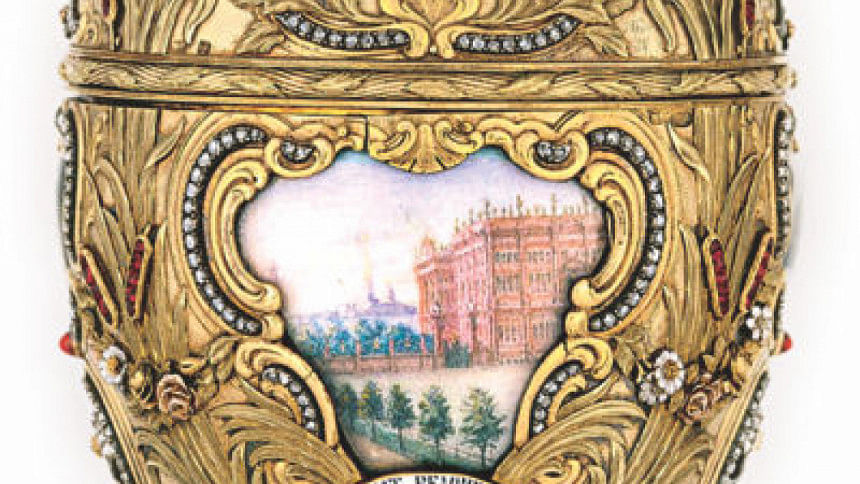
Empress Maria was so impressed that the custom continued until the tsar's death in 1894. After Alexander's death, his son Nicholas II, presented a Faberge egg, both to his wife Alexandra Feodorovna and mother, the Dowager Empress Maria Feodorovna. By then these eggs gained fame as Imperial Eggs and Faberge made 50 eggs, each with its unique element of surprise and mystery. Eventually Faberge became world famous and a 'goldsmith by the special appointment to the Imperial Crown.' He often took commisions to make similar eggs for his private clients.
The House of Faberge had created 50 eggs, of which 43 has survived. Over a century these brilliantly crafted objects have become a symbol of sophistication, power and wealth of the Romanov Dynasty (1613-1917 A.D.).
After the revolution, the Faberge' family left Russia and the company changed several hands, but the trademark is still owned by Faberge' Limited. While the hunt is still on for finding the missing eggs, some Faberge' Imperial Eggs are now in Kremin armoury, and the rest are scatterred around the world in the hands of private collectors.
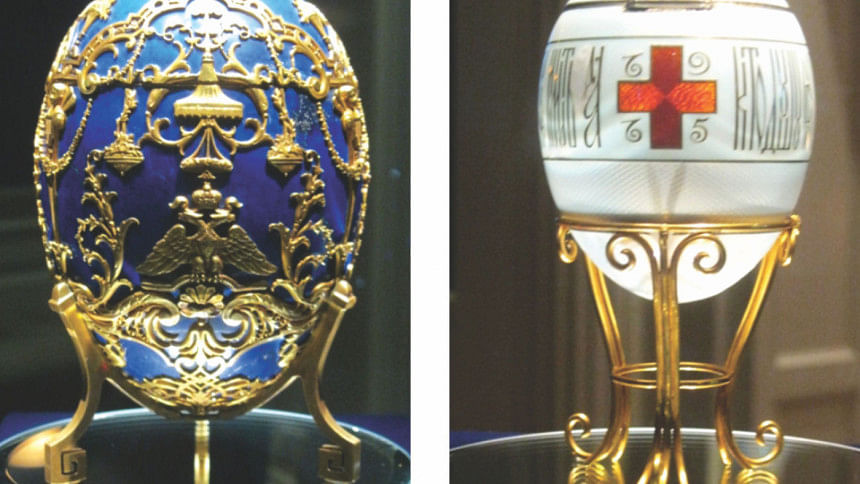
The Virginia Museum of Fine Arts ( VMFA) has a siginificant collection of Faberge' objects donated by Lillian Thomas Pratt, and among the donated pieces are no less tha five ellusive Imperial Eggs. This, accorfing to VMFA, is the largest public collection outside Russia.
I had the opportunity to see some of these objects of famed art, at the VMFA and was mesmerised by the brilliance of the intricate designs and splendour of the richness of the shiny gold.
The Imperial Tsarevich Easter Egg, one that is on display, was created in 1912 for Empress Feodorovna as a tribute to her son the Tsarevich Alexei Nikolaevich. The surprise inside the egg is a diamond-set,double headed eagle standing on a lapis lazuli (deep blue semi-precious stone) pedestal that holds two portrait views of Tsarevich Alexei Nikolaevich, son of Tsar Nicholas II and Empress Alexandra Feodorovna. The miniature portrait is of Tsar Alexei in a sailor suit.
The Imperial Pelican Easter Egg (produced in 1897) itself unfolds into eight ivory minatures. It was presented by Tsar Nicholas II to his mother in 1898, and commemmorated the centenary celebratios of the charities and the educational institutions she directed. The selection of the pelican motif was made as it symbolises maternal care and is the official symbol of the Dowager Empress's charities and institutions.
The Faberge eggs are a window to the history of the Russian empire, their glory and somewhat their ostentatiousness. Yet there is no doubt that these bejewelled pieces give us a snippet of a time that was followed by much turmoil. If you are interested to learn more about the Fabrge eggs, just log onto:https://vmfa.museum
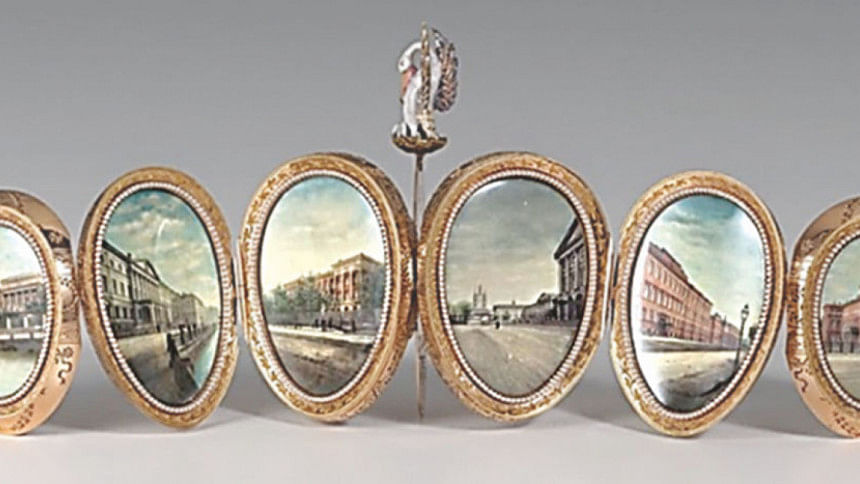
Photo courtesy: Aeman T Rasul

 For all latest news, follow The Daily Star's Google News channel.
For all latest news, follow The Daily Star's Google News channel. 


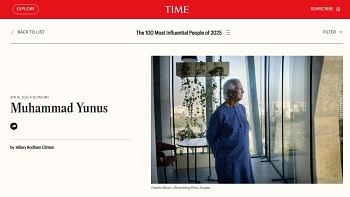
Comments